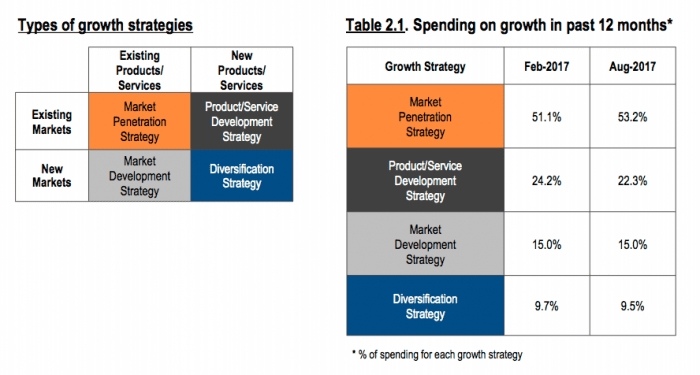Growth Strategy Benefits, Types & Examples
A growth strategy is a plan for expanding a business and increasing its revenue. There are many different types of growth strategies, and the best one for a particular business will depend on its size, industry, and target market.
Some common growth strategies include:
- Organic growth: This type of growth occurs when a business expands its existing products or services to new customers. For example, a restaurant might open a new location or start offering delivery.
- Inorganic growth: This type of growth occurs when a business acquires another business or merges with another business. This can be a quick way to expand into new markets or add new products or services.
- Diversification: This type of growth occurs when a business adds new products or services that are unrelated to its current offerings. This can help a business reduce its risk by diversifying its revenue streams.
- International expansion: This type of growth occurs when a business expands its operations into new countries. This can be a great way to reach new customers and grow revenue.
When developing a growth strategy, it is important to consider the following factors:
- The company’s goals: What does the company want to achieve with its growth strategy? Does it want to increase revenue, market share, or brand awareness?
- The company’s resources: How much money, time, and people does the company have to invest in growth?
- The company’s competitive landscape: What are the other businesses in the company’s industry doing to grow?
- The company’s target market: Who is the company’s target customer? What are their needs and wants?
Once these factors have been considered, the company can start to develop a growth strategy that is tailored to its specific needs.
Here are some additional tips for developing a successful growth strategy:
- Be clear about your goals. What do you want to achieve with your growth strategy? Do you want to increase revenue, market share, or brand awareness? Once you know your goals, you can start to develop a strategy that will help you achieve them.
- Be realistic about your resources. How much money, time, and people do you have to invest in growth? Don’t set yourself up for failure by trying to achieve too much with too little.
- Understand your competitive landscape. What are the other businesses in your industry doing to grow? What are their strengths and weaknesses? By understanding your competition, you can develop a strategy that will help you stand out from the crowd.
- Know your target market. Who is your target customer? What are their needs and wants? By understanding your target market, you can develop a strategy that will resonate with them.
- Be flexible. The business world is constantly changing, so it’s important to be flexible with your growth strategy. Be prepared to adapt your strategy as needed to ensure that you are always on track to achieve your goals.
By following these tips, you can develop a successful growth strategy that will help your business grow and thrive.
In addition to the above, here are some other specific growth strategies that businesses can pursue:
- Acquisitions: This is a common growth strategy for businesses that want to quickly enter new markets or add new products or services. By acquiring another business, a company can gain access to its target market, its products or services, and its employees.
- Joint ventures: This is a growth strategy in which two or more businesses agree to work together on a project or venture. This can be a good way for businesses to share resources and expertise, and to enter new markets.
- Strategic partnerships: This is a growth strategy in which two or more businesses agree to collaborate on a specific area, such as marketing or sales. This can be a good way for businesses to gain access to each other’s customers and resources.
- New product development: This is a growth strategy in which a business develops new products or services to sell to its existing customers or to new customers. This can be a good way for businesses to stay ahead of the competition and to meet the needs of changing markets.
- Market expansion: This is a growth strategy in which a business expands its operations into new geographic markets. This can be a good way for businesses to reach new customers and to grow revenue.
The best growth strategy for a particular business will depend on its unique circumstances. By considering its goals, resources, competitive landscape, target market, and flexibility, a business can develop a growth strategy that is tailored to its specific needs and that will help it achieve its goals.





